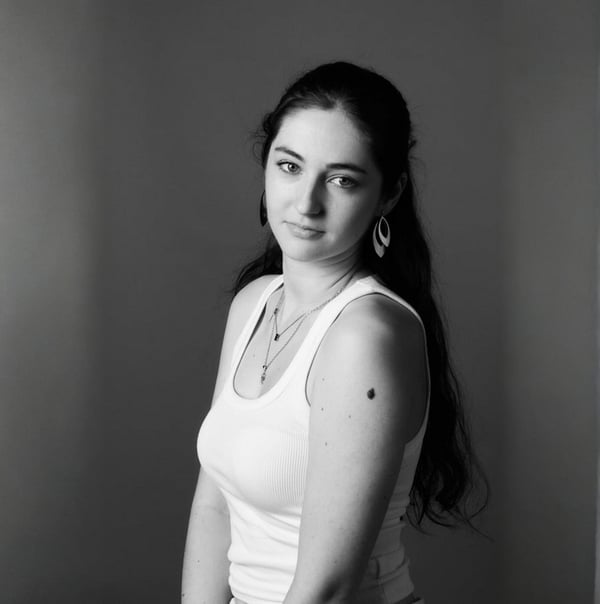Top 6 Alternatives to Lalaland.ai for AI Fashion Model Generation
Table of Contents
- 1. Modelia
- 2. ZMO.ai
- 3. Deep Agency
- 4. Synthesis AI
- 5. Rosebud AI
- 6. Veesual.ai
- Why Look for Alternatives to Lalaland.ai?
- How to Choose the Best Lalaland.ai Alternative for Your Brand
- Benefits of Using AI Fashion Model Generators in E-Commerce
- 3D Virtual Try-On: How Technology is Revolutionizing Online Shopping and Fashion
- Searching alternatives
Artificial intelligence has radically transformed the way fashion brands create visual content. Among the pioneering tools in this space, Lalaland.ai has gained popularity by enabling the generation of virtual models that realistically showcase clothing, quickly and without the need for traditional photoshoots. However, as the market diversifies, many brands are seeking Lalaland.ai alternatives that offer more creative control, better realism, more competitive pricing, or more advanced technical integration.
If you're evaluating options, this article introduces the top 7 Lalaland.ai competitors making waves in 2025.
1. Modelia
Modelia has become one of the most powerful and versatile Lalaland.ai alternatives on the market. This platform not only generates highly realistic virtual models but also allows brands to control specific details such as skin tone, posture, lighting, background style, and overall model aesthetics. It also offers API integration, ideal for automated workflows in large fashion catalogs.
One of Modelia’s standout features is its AI outpainting system, which extends images beyond their original borders, completing backgrounds or generating full visual environments without manual editing. This enables users to create entire campaigns, virtual lookbooks, and marketing assets without relying on physical photoshoots. Its interface is intuitive and designed for both technical and creative teams, making it a comprehensive solution for digital fashion and visual eCommerce.
It also offers different tools to create models depending on the characteristics of the input image you have to transform. Either it is a flat lay garment, a mannequin, ghost mannequin or another model, Modelia can transform it into a high quality modeling photo that seems out of a professional lookbook. It also can create videos out of a single photo, just as easy as introducing a prompt and wait a few seconds.
If you want to learn more click here!
2. ZMO.ai
ZMO.ai is an excellent alternative for small DTC (direct-to-consumer) brands seeking a simple and accessible tool. Unlike more complex platforms, ZMO focuses on usability and delivering fast results with no technical learning curve. Users can choose from different model styles, skin tones, and virtual outfits to create ready-to-publish images in minutes.
This platform has become a favorite Lalaland.ai alternative for entrepreneurs, startups, and independent stores looking to professionalize their image without large investments. Its pay-per-use pricing model makes it flexible for brands with tight budgets or variable content needs.
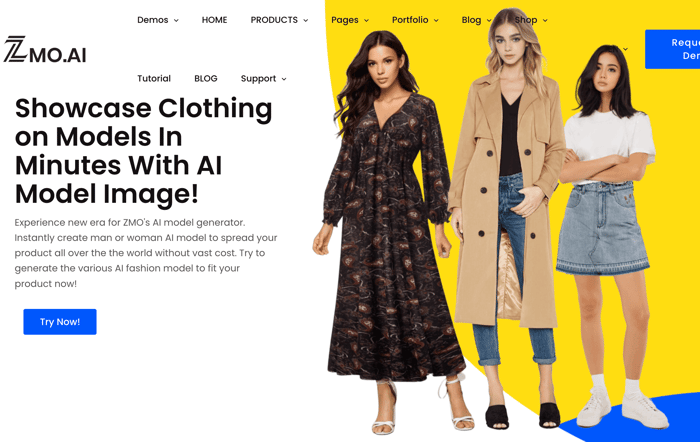
3. Deep Agency
Deep Agency combines AI model generation with a focus on virtual photography. Users can select digital models, define their pose, camera angle, and visual style, while the AI creates the final image. It’s ideal for brands seeking editorial results, campaign visuals, or stylized content for social media.
Although still in development in some areas, Deep Agency offers a distinct approach among Lalaland.ai competitors, with a creative emphasis on style and aesthetics. It’s a compelling option for fashion designers, creative agencies, and premium brands seeking a unique visual identity in their campaigns.
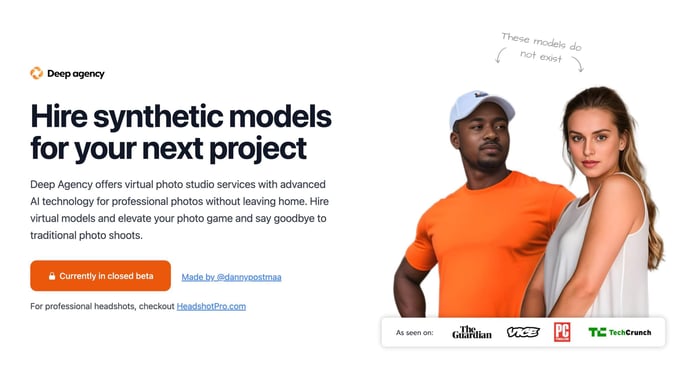
4. Synthesis AI
Synthesis AI is an enterprise-grade solution focused on synthetic human generation for model training, virtual reality and fashion visuals. While it’s not exclusively focused on clothing, its realistic rendering capabilities, ethnic diversity, age range, and body variation make it a top-tier tool for brands needing diverse and realistic models at scale.
Thanks to its robust infrastructure, it's a preferred Lalaland.ai alternative for large corporations, mass eCommerce platforms, or digital innovation labs working with visual big data and product personalization.
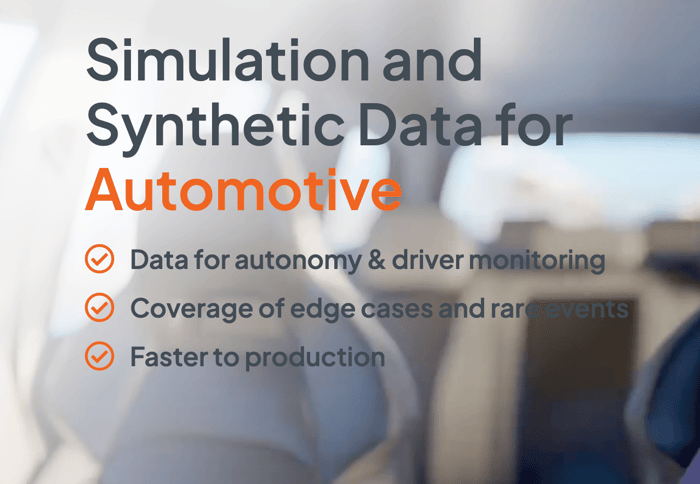
5. Rosebud AI
Rosebud AI allows brands to generate virtual models, swap faces in images, and simulate how clothes would look on various body types. It’s especially useful for brands aiming to tailor visual content to different regions or demographic profiles. With Rosebud, companies can create localized campaigns without multiple photo shoots.
This tool focuses on facial personalization, enabling brands to adapt visuals to specific audiences. Its emphasis on diversity and representation makes it a valuable player among Lalaland.ai competitors.
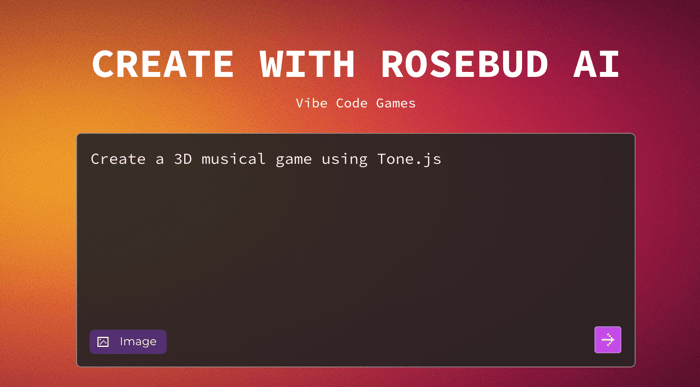
6. Veesual.ai
Veesual.ai offers a modular approach to fashion image creation. Its system lets users combine models, garments, and scenes automatically, maintaining perfect visual consistency. Brands can generate hundreds of garment variations using different models, styles, or backgrounds, ideal for extensive catalogs.
Additionally, its platform is optimized for eCommerce integration, supporting A/B testing, bulk content generation, and adaptation to various ad formats. Veesual has earned its spot among the best Lalaland.ai alternatives for brands with high product turnover and diverse visual lines.
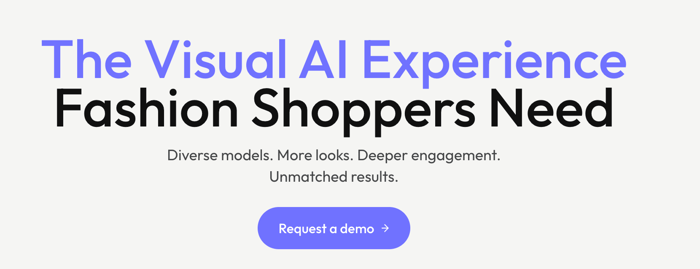
Why Look for Alternatives to Lalaland.ai?
While Lalaland.ai was among the first platforms to offer AI-generated virtual models, today there are numerous options that provide greater control, flexibility, diverse styles, and more robust integration models. Exploring different Lalaland.ai alternatives will help you find the tool that best suits your specific needs, whether that's more customization, scalability, technical compatibility, or cost-effectiveness.
Investing in these technologies not only streamlines the creative and operational process, but also enhances visual content quality, reduces traditional production costs, and strengthens brand experience.
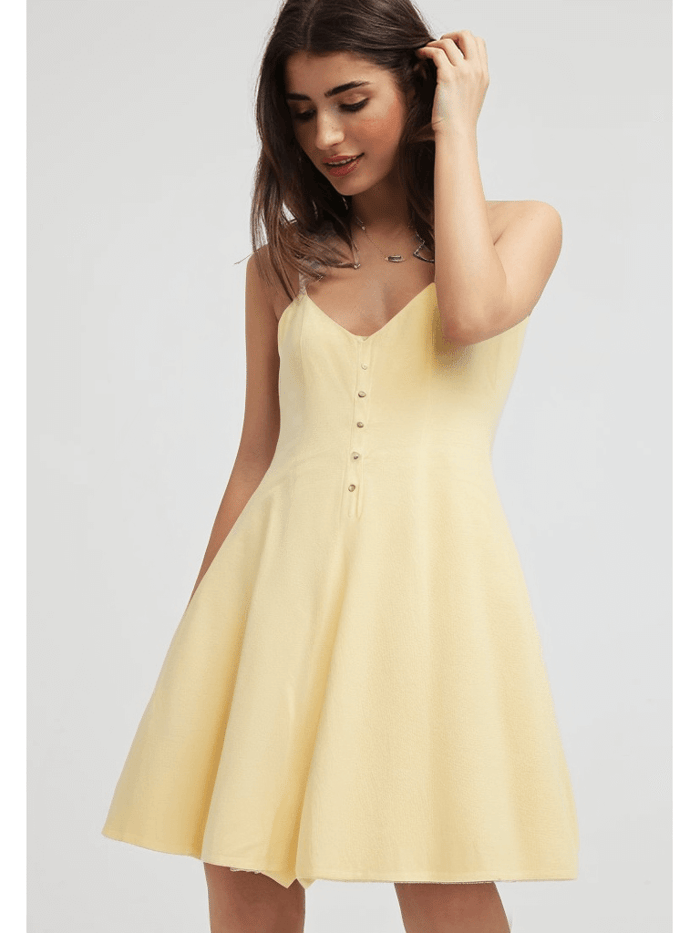
How to Choose the Best Lalaland.ai Alternative for Your Brand
Choosing from the various Lalaland.ai alternatives on the market can feel overwhelming without a few key criteria in mind. Not all platforms offer the same features, and the best option depends on your business size, budget, visual content needs, and internal workflow.
For brands seeking scalability and automation, tools like Modelia or Vue.ai with API integration and batch generation may be more suitable. If your priority is visual customization—such as selecting poses, skin tones, or simulating specific emotions—platforms like Rosebud AI or Deep Agency offer greater artistic control. Another crucial factor is the level of realism: some Lalaland.ai competitors focus on ultra-photorealistic results, while others allow for more stylized or editorial aesthetics.
It’s also vital to evaluate support quality, technical integrations (such as compatibility with Shopify, Magento, or custom CMSs), ease of use, and of course, pricing structure. Some platforms charge per image, while others offer monthly subscriptions or tailored enterprise packages.
Benefits of Using AI Fashion Model Generators in E-Commerce
Integrating AI models in eCommerce offers numerous benefits for both emerging brands and major retailers. First, these tools drastically reduce production costs by eliminating the need for photoshoots, model logistics, and post-production editing. This enables the creation of extensive catalogs within hours, without sacrificing visual quality.
Second, using platforms like Modelia allows brands to diversify their models without casting constraints. Brands can easily represent different body types, ages, ethnicities, or aesthetic styles aligning their image with the values of inclusivity and representation that modern consumers value.
Additionally, AI model generators support content creation for multiple formats: from social media images and web banners to marketplace photos and interactive lookbooks. This improves visual consistency and speeds up the time-to-market for new launches. For all these reasons, Lalaland.ai alternatives are not just a temporary solution, but a strategic tool to scale digital brands efficiently, creatively, and with a consumer-first mindset.
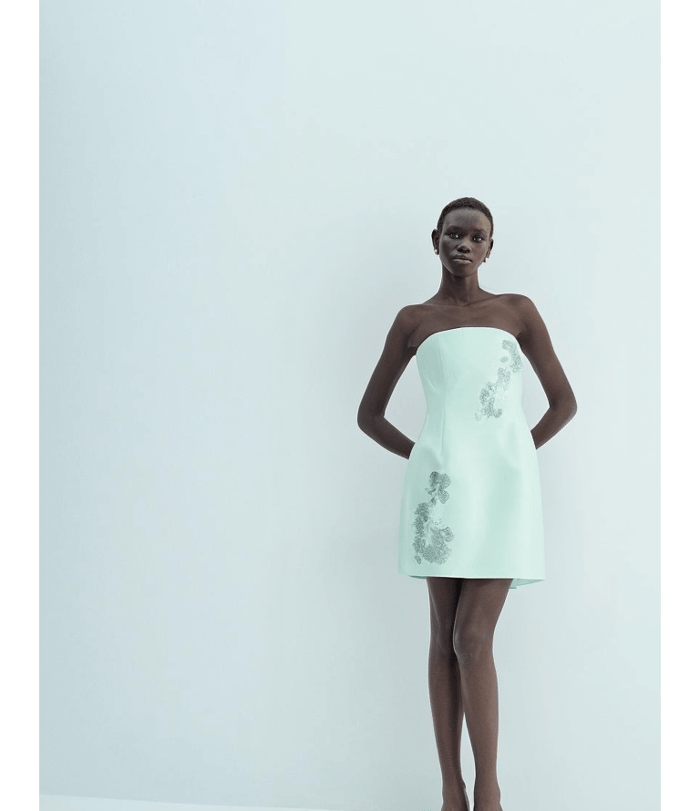
3D Virtual Try-On: How Technology is Revolutionizing Online Shopping and Fashion
The world of fashion is undergoing a digital revolution, and one of the most transformative innovations is 3D Virtual Try-On technology. By combining artificial intelligence, augmented reality (AR), and 3D modeling, this technology allows shoppers to virtually “try on” clothing and accessories before making a purchase. This not only enhances the shopping experience but also bridges the gap between online and in-store retail.
What is 3D Virtual Try-On?
3D Virtual Try-On is a technology that creates realistic, interactive 3D representations of clothing and accessories on a user’s digital avatar or live image. Unlike traditional product images, this system can simulate how fabric drapes, stretches, and moves according to body shape and pose. It goes beyond static photos or 2D try-on tools by offering a more immersive, lifelike experience.
How It Works
Body Scanning or Avatar Creation: Users can create a digital avatar by inputting their measurements or using body scanning technology available on some apps.
Clothing Simulation: The 3D try-on software overlays the selected garment onto the avatar or live image, simulating fabric textures, colors, and fit.
Interaction: Users can rotate, zoom, and even move to see how the clothing looks from different angles, providing a realistic preview before purchase.
Benefits for Shoppers
Enhanced Confidence: By seeing how clothing fits and moves on their body, shoppers are less likely to return items, reducing purchase anxiety.
Personalized Experience: Shoppers can experiment with different styles, sizes, and colors virtually, creating a customized shopping journey.
Time-Saving: No need to visit multiple stores or try on numerous outfits physically, which is especially valuable in busy urban lifestyles.
Benefits for Fashion Brands
Reduced Returns: Virtual try-on technology helps consumers make better-informed decisions, leading to fewer returns and exchanges.
Data Insights: Brands gain valuable data on consumer preferences, helping optimize inventory and design choices.
Marketing and Engagement: Interactive try-on experiences can be integrated into social media, creating engaging campaigns that increase brand visibility.
Searching alternatives
So, if you were searching for Lalaland.ai alternatives, Modelia is one of the best options for you. Its combination of hyper-realistic rendering, creative flexibility, and seamless integration makes it a standout choice for fashion brands aiming to scale content production while maintaining a high-end aesthetic.
That said, the best platform will always depend on your brand’s specific needs, whether you're looking for speed and affordability (like ZMO.ai), editorial flair (like Deep Agency), or robust enterprise capabilities (like Synthesis AI). Exploring these alternatives empowers you to find a tool that aligns with your creative vision, budget, and workflow.
In a fast-paced digital landscape, embracing AI models isn’t just about staying current it’s about future-proofing your brand with smarter, more efficient visual strategies.
How would you rate this article:
Related Articles
- Smart Clothing Technology: The Future of Wearable Tech and Fashion Innovation
- The Best Sustainable Fashion Brands Changing the Industry
- Top fashion brands leveraging artificial intelligence in 2025
- Top Sustainable Outdoor Clothing Brands for Eco-Friendly Style
- Create Sketches from Photos with AI
- AI Photo Enlargement: Enhance Image Quality with Artificial Intelligence Technology
- Content Marketing for Ecommerce: How to Attract and Retain Customers
- Best AI Image Generator for Shopify
- Autumn Fashion Trends 2025: Key Styles & Outfit Ideas
- What Are Digital Outfits? How AI Is Powering Virtual Style
